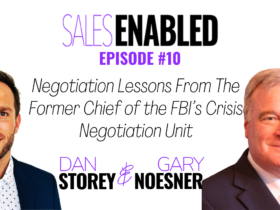Having a strong sales onboarding plan has a number of benefits, not just for the new starter, but also for the company. All companies want their salespeople to get up to speed as quickly as possible, but with employee satisfaction an ever-increasing focus, every organisation has to ensure a great employee experience by developing an effective sales onboarding program. How do you decide on the steps of your sales onboarding plan? Some good questions to ask include:
- How to get your new hires to start strong from the first day?
- How to engage new employees and make them welcomed in your organisation?
- What combination of tools can provide a perfect onboarding experience?
Before we dig deeper into onboarding challenges and how to develop a sales onboarding program, let’s clear out the definition of onboarding.
What is Onboarding?
Most people think onboarding is a process of welcoming new hires, enlightening them with the work culture, employees, processes, and benefits of the company along with some paperwork. If this is all that is provided in a sales onboarding program, we are definitely making it harder for them to perform.
Onboarding is the communication and adoption of the organisational, cultural and departmental values and expectations to a new hire.
Organisational onboarding ensures that the new hires are welcomed, familiar with the official process, complete all the paperwork, receive their appropriate IT equipment and have the necessary information about employee benefits. This is usually completed by the HR team as part of all new hire onboarding, and is certainly not enough for a new salesperson.
Cultural onboarding ensures that your new salesperson is familiar with the values of the organisation. This can be accomplished by assigning a buddy to show you around, or more formally by introducing placement activities in the onboarding program so people can get to know other departments such as retail or customer support. Getting new hires to “drink the cool aid” can help ensure they feel comfortable in their new environment, but is not likely to help sales performance.
Departmental onboarding, especially for salespeople, is what they need to get ramped up as quickly as possible. There is a lot of information you need to share to ensure your new rep gets productive and is able to sell correctly. Products, client profiles, systems, reporting and targets are just a few of the areas you will want to cover in your sales onboarding plan.
Checklist for Sales Onboarding Program
When hiring new salespeople for your company, onboarding can be one of the most critical stages you need to consider. The more impactful your onboarding program, the faster your new sales hires make an impact. Here is a checklist for how you can develop an effective sales onboarding program:
Before They Start
Here are the things you need to do before your new sales reps join:
- Pre-boarding
Prepare a few pre-boarding exercises 1-2 weeks before your new hires join. They can complete all the company and tax-related forms so you can save some time on their first day. Share the documents and contents related to your company like videos, PDFs, etc. This will help in building a connection with the company, helping them handle their nervousness.
For salespeople, you can share news, success stories, and other externally available information about your company. Share success stories of employees in sales to create an impact on their minds. Maybe even ask them to prepare a quick presentation on a customer success story for their first day.
- Day 1 Administration & Orientation
On the first day, teach them your company’s broad strokes. Take your new hires to an office tour, share HR documentation, and introduce them to the company in general. From a sales perspective, make sure they meet their new team and get to know them, maybe over an informal lunch or end-of-day drinks. If you are going to assign a buddy, try and do this on day 1 and ensure the buddy covers some of the less official onboarding tasks.
After Day 1: Training
Start providing sales training to the new sales reps from the second day. Here is what you can cover in training:
- Product/Service Introduction
What will the new reps sell? It is important to train your sales reps on how to use, administer, and see products/services’ value. Give them extensive product training and make them go through inbound marketing training.During the training, teach them to talk about the product and its features confidently. Conduct an assessment to check their understanding of the product and gauge their progress.
- CRM training
Teach them how to use CRM software and provide them with project-based training. Teach them how to enter new contacts, log communication, and set reminders. They can also take a CRM certification exam when they feel comfortable. The exam is a great way to ensure that the sales reps understand how to use the tool.
- Sales Process Training
Explain to them the sales cycle and sales processes your business follows. Make them aware of conversion rate benchmarks, as this will teach them where they should prioritize their efforts.
- Train Them on Handling Prospects
Explain the company’s process of handling prospects. Share touchpoints, best practices, and common channels your company use. Plan how much research salespeople need to conduct and what are the details that they should look at.
- Explain the Buyer Personas
Here, you need to explain to the new sales reps about your ideal customers. If your company deals in B2B sales, teach them how a best-fit company will look like and what contacts they should target.
If you deal with B2C business, describe the customer specifications they should target. Also, teach the new hires about how your business communicates and assesses the prospects.
Apart from these, you can include the following in the training session:
- Provide competitive analysis
- Provide pitch/demo training from your top sales reps
- Training on negotiation and objection handling
- Technical training
- Customer onboarding training
Post Training
- Set clear goals and expectations
Once the new rep is on onboard, set one-month, two-month, and three-month goals. Calculate the ramp rate based on the number of months each of them take to achieve full quota. You can make the analysis more accurate by adjusting the average ramp period based on the sales rep’s experience.
An experienced salesperson may take 4-5 months to ramp, while a college graduate fresher may take as much as 10-12 months.
Assign a Mentor for the new hires
When the new sales reps are ready to hit the floor, assign them mentors who are more experienced. Mentees can put their queries, comments, and doubts in front of the mentors. Mentorship will provide new employees with guidance, support, and advice from someone familiar with the whole process but who is not responsible for their day-to-day management.
For salespeople, the ramp-up process is tough. But with an effective onboarding program, businesses can gain a huge Return on Investment on the efforts and time invested in the new sales hires. Don’t just limit your onboarding process here; guide and support your new team, and the business can enjoy the benefits of employee retention, high morale, and unmatched performance.














Leave a Reply